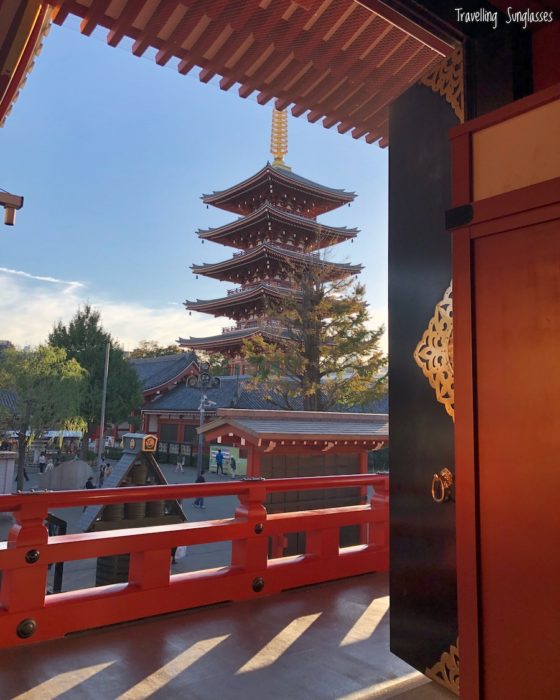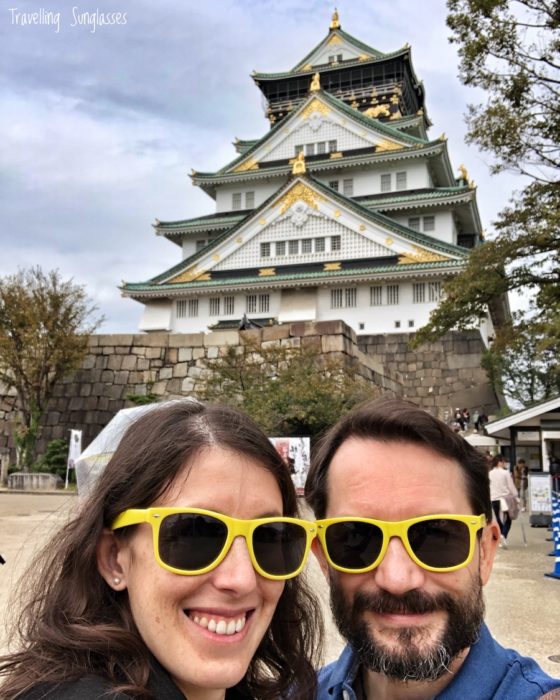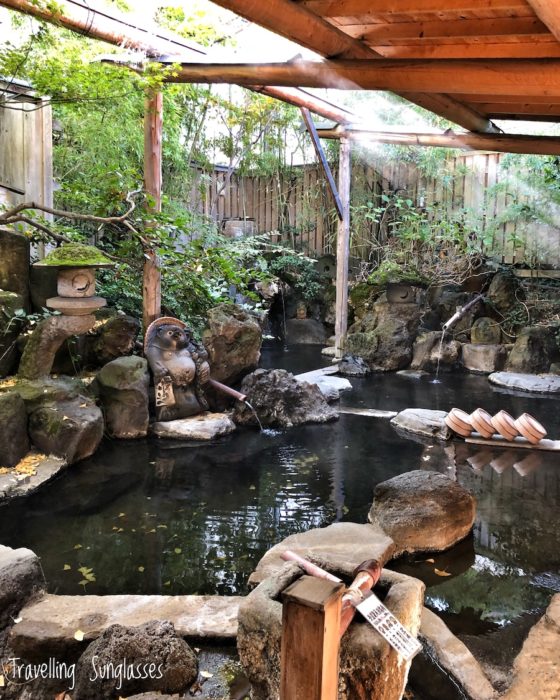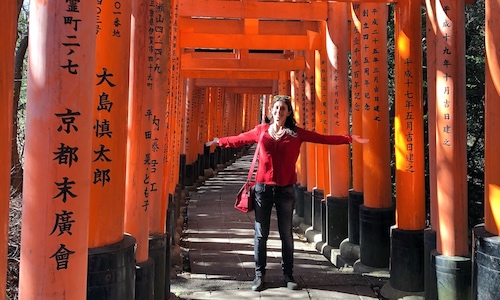We were incredibly excited when we started to plan our trip to Japan! If you have a full-time job like us, with few and precious days off, I’m sure you know the feeling. We have to make each moment count, without freaking out and stressing too much.
This awareness pushed us to plan a clever itinerary: efficient enough in order to see and experience lots of places, but also open enough for some spontaneity, to rest and enjoy our time in Japan.
Let us inspire you to organize your trip! In this post, we will walk you through everything you should think about and consider when planning your trip to Japan.
Do you want to know how it worked out? Find here our 2-weeks Japan itinerary!
Help me run my blog! This post contains some affiliate links: the small commission I may earn if you click through and make a purchase/booking (at no extra cost to you) will go towards supporting the site and our travels. That means more posts and useful info for you!
We only recommend products we use ourselves and believe in. Thank you for supporting Travelling Sunglasses!
Click here to read our full disclosure.
Practical preparation
Before you even start looking at flights, have a look at the “boring” parts of organizing a trip to Japan:
- Do you need a visa? How long does it take to get it?
- Do you have a Wise multi-currency debit card? Make sure you request it in advance, as it will make your life between different currencies much much easier. Read our review here or get the card here.
- Do you have insurance? Do you want to buy one? We travelled without insurance on our first trip to Japan and didn’t have any problems at all (no food allergies, no injuries, no thefts, no flight delays…)
- Are you a suitcase traveller, or a backpacker? Consider minimal packing! Check out our video and find out how we packed 2 weeks of clothing in an 8-kg hand-luggage
- Are you aware of how much you rely on the internet? We strongly recommend using a pocket Wi-Fi, a simple device that fits in your pocket and provides you with your own connection: safe, independent, and rechargeable every night.
Cultural preparation
If you’re not very knowledgeable about Japanese customs, you should learn more about Japan before you go there.
It is very common to come back confused from cultural clashes, and even disappointed. “Nobody spoke to each other in the metro” or “They speak so little English, it was hard to understand them”.
Invest in guidebooks, watch YouTube videos, read blogs and stories of travellers and expats. Check out this list of great novels about Japan! Japan will still surprise you, but hopefully not in a bad way.
For example, we were really amazed by the kindness and politeness Japanese people demonstrated towards us; we were so tired on the underground that we didn’t even notice the silence; and we were still quite surprised at the low level of English spoken by most Japanese we interacted with.
What about Japanese food? Whether you already love it or not, you will be surprised! Check out this quick guide to Japanese food so you know what to expect.

Time it right
We chose clever dates according to our work schedule, which luckily matched with Darek’s birthday. Also, with two national holidays close to each other, we used only 7 days of annual leave to travel for two weeks!
October in Japan was fantastic: a few last warm days, a few red and yellow leaves pop up in the trees, limited crowds… just gorgeous!
It’s impossible to say what is the best time to travel to Japan because it is such a subjective choice. For example:
Winter in Japan
It’s going to be cold, but the air will be more crispy, with higher chances to see Mount Fuji! Cities might be a bit less crowded. If you love snow, you will find great activities to do! Also, New Year’s Eve celebrations will be fun and unique.
Spring in Japan
Cherry blossom season (approx. from mid-March to mid-April, depending on the year and on the part of Japan) must look incredible. Also, it is really crowded and more expensive – you may actually have to start planning one year ahead. Consider looking for destinations off the beaten path!
Summer in Japan
Summer months can be hot, and there can be typhoons (and lower visibility of Mount Fuji). But even temperature is subjective, right? If you’re used to it or it doesn’t affect you, then go for it: summer is not that crowded, the days are long…
Autumn in Japan
Just like the cherry blossom, also foliage depends on the year and on which part of Japan you are visiting, so don’t have too high expectations. It can range from September to November; when we visited, it was actually warm enough for some flowers to blossom.
Be efficient: Choose national holidays to enjoy longer travel time!
Be spontaneous: Let a fantastic travel deal inspire you, just book it! You will figure out the rest of the adventure as it goes.
These services and apps made my trip to Japan much easier and enjoyable! Check them out:
- The Wise Multicurrency Card where I could exchange money into yen with 3 taps on my phone, and save on unexpected bank fees
- Booking.com and its clear layout made it easy to choose and manage our accommodations
- Google Maps, full of attractions saved and very useful for the local public transport
- OneNote where I had all my plans and notes of where to go and what to do
- Snapseed for easy and quick photo editing
- And most of all, Japan Wireless, because we always needed an internet connection to make it all work! We used the handy Pocket Wifi, and next time we’ll try the magical eSIM.
Saving information
If you’re anything like us, you are aware of how we are bombarded by information all the time. Especially for Giulia, the organized half of the couple, so it is fundamental to keep track of information, ideas, and tips.
Everything I found was saved in the most logical place: videos are YouTube’s history, tips and ideas (as well as blog links) in a shared OneNote notebook, and places in Google maps. When I was on the go, I would screenshot Instagram pictures, Facebook posts, advice from friends on Whatsapp, and review later. I share my best advice on our favourite travel apps here.
Ultimately, what I aimed to have is a Google Map with everything I am interested in, and a OneNote notebook with details about them, opening hours, tips and practical details.
Be efficient: All this info will help you with a plan A, B and C! Attractions are closed, weather changes, or anything else: you will be ready.
Be spontaneous: Keep some free time and allow for a bit of spontaneous exploration: you may find the best treasures like this! (Like what we did in Venice).

Calculate your budget
As you research on what to do and where to go, take notes of the costs you find. Flight, accommodation, food, activities… try to think of everything, and then add a bit more. For reference, this is how much we spent on our honeymoon to Japan: for our usual habits, it was a bit more expensive than our usual travelling style, but it was worth it!
Flying choices
We searched for flights on Skyscanner, and for comfort, we chose a return ticket from Tokyo. Perhaps another route could have been more clever, but we were in a rush to book before prices would increase.
After flying cheap for many years, we realized that saving money was costing us in terms of energy and mood: waking up at 4 AM was not worth the price difference of a more convenient flight! Now that our jobs allow a little more comfort, we try to choose flights that will not drain our energies for the next couple of days.
Be efficient: Use Skyscanner or Google Flights to track prices and find the best deal. Before booking, remember to research the reputation of the third party you choose to use, or on the customer service of the airline.
Be spontaneous: Tracking prices like a hawk makes you even more anxious? If the price fits in your budget, go for it! There’s no reason to go crazy.
Plan your trip to Japan like a puzzle
The perfect Japan itinerary will be perfect only for you. After all the research you’ve done, you must be almost there!
For us, it was quite a challenging process, but very satisfying. Let’s not forget that this was our honeymoon! The perfect occasion for some special and unique experiences, but still without overspending.
Darek had already been to Japan, so he had some ideas on what he wanted to show me and what he was not interested in. So the three main cities were chosen: Tokyo, Osaka and Kyoto.
All the research paid off: YouTube, TripAdvisor, Instagram, Facebook groups, friends recommendations, and the Rough Guide to Japan as a source of trustworthy information. One by one, many attractions caught our attention, from shrines to onsens, restaurants, museums, and parks.

A few of these attractions became fixed points in the trip: return flight and Halloween in Tokyo obliged us to be there on October 31st; Universal Studios and Harry Potter world are less crowded on weekdays, which made us go to Osaka on a Monday-Thursday period. Consequently, all pieces started to fall into place: Osaka, then Kyoto, then Tokyo.
We placed day trips or one-nighter cities according to geography: Kobe when in Osaka, Nara between Osaka and Kyoto, and Hakone between Kyoto and Tokyo. Our first stop was chosen both on geography and comfort: an onsen village to relax after the long journey, at a reasonable distance from Tokyo.
Be efficient: Keep in mind that you most probably won’t do everything you wanted, nor go everywhere you wished. This awareness will help you choose what really matters.
Be spontaneous: Brave enough to land without a plan? Just book the first couple of nights, and keep going!
How to choose your accommodation in Japan
As the itinerary came together, we booked accommodation in every city, alternating traditional ryokan, cheap guest houses, quirky capsule hotels, and the occasional hotel. It was so exciting to include many types of accommodation in our trip!
We focused on the location, near public transport and in the city centre, as our budget allows us to spend a bit more money instead of more time.
Did you order your multi-currency Wise debit card? You will need it now, to pay for the non-refundable accommodation in Yen and save on exchange rates and commissions! Or, if your budget allows and your situation requires it, consider a flexible rate that you may cancel later.
Watch out for AirBnBs: as the laws become more strict, not all flat owners register to pay taxes. You may find yourself with a cancelled booking later on.
Be efficient: Especially if you chose a very busy period, book in advance!
Be spontaneous: If you’re travelling in low season and you’re very flexible, you will certainly find something even last-minute.

Plan some time to be spontaneous
I have to admit, my efficiency and Darek’s spontaneity balance each other really well – although with some friction here and there. Half-way through our trip, I was so exhausted and in a bad mood, that I finally realized I was over-planning. Darek’s capacity to stop for a snack, or wander off a different street, was refreshing and life-saving.
The stars you saved on Google Maps will help you understand what you can plan. Keep calm, and plan one thing less per day than you wish. Allow yourself to stop at a quirky shop, to enjoy a traditional snack in the park, to gaze five more minutes at the incredible decorations in a temple. If everything goes according to plan, you may still manage to see that one place you wanted to!
Plan your perfect trip to Japan with my detailed and inspiring posts:
- 2-week honeymoon itinerary in Japan, our full guide with maps and details
- How much we spent on our honeymoon to Japan
- Useful and practical travel tips to plan your trip to Japan
- 5 unique Japanese experiences you have to try
- The most unique Japanese souvenir: the Goshuincho book
Final thoughts on how to plan a trip to Japan
We loved travelling to Japan so much that we went there again just one year later! If we could, we would definitely move there for a few months.
Overall, the approach above has allowed us to enjoy Japan from every point of view: the modern and the traditional, the expensive and the cheap, the plans and the surprises.
Do you find our tips useful? What did you do to plan your trip to Japan? Let us know in the comments!
